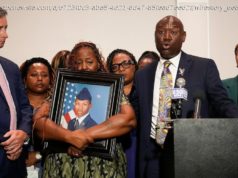A huge volume of rain overwhelmed the region’s infrastructure, showing the lethal impact of climate change.
Three days after Hurricane Ida made landfall in Louisiana, the weakened storm’s remnants had claimed at least 43 lives across New York, New Jersey and two other states by Thursday, serving as an ominous sign of climate change’s capacity to wreak new kinds of havoc. The last storm this deadly in the region, Sandy in 2012, did its damage mostly through tidal surges. But most of this storm’s toll — both in human life and property damage — reflected the extent to which the sheer volume of rain simply overwhelmed the infrastructure of a region built for a different meteorological era. Officials warned that the unthinkable was quickly becoming the norm. “There are no more cataclysmic ‘unforeseeable’ events,” Gov. Kathy Hochul of New York said Thursday morning. “We need to foresee these in advance and be prepared.” The rain was shocking in its intensity. More than three inches fell in a single hour in Central Park Wednesday night, shattering a record that had been set just days before by Tropical Storm Henri; across the region, more than half a foot of rain fell within a few hours. The deluge turned streets to rivers across the Northeast and trapped people in flooded basement apartments. Emergency workers in boats rescued people stranded on the roofs of their cars and in flooded buildings. The storm spawned tornadoes that reduced houses in a southern New Jersey town to splinters, cut power to over 200,000 homes and in Philadelphia sent the Schuylkill to near-record levels and submerged part of a highway. Twenty-three people died in New Jersey, including at least three people who were submerged in their cars and four in an apartment complex in Elizabeth. Fifteen people died in New York State, most of them in basement apartments in New York City. Four people died in Pennsylvania, north of Philadelphia, at least three by drowning. And a state police sergeant in Connecticut died after his car was swept away by floodwaters. The storm also crippled mass transit. Much of New York City’s subway system was partly or wholly suspended for most of Thursday; the storm shut down commuter rail lines, grounded planes and forced the evacuation of hundreds of people from stalled trains. And it left Americans wondering how a storm that had slammed Louisiana as a Category 4 hurricane and left the power grid there in shambles had somehow grown to its most deadly after being downgraded to a tropical depression — 1,200 miles after breaching the Gulf Coast, where it left 16 people dead, including 12 in Louisiana. In New York City, the storm’s toll reflected not just an ancient and inadequate drainage system but entrenched inequality: At least 11 of the 13 people who died in the city perished in basement apartments, most of them in Queens, in immigrant-heavy neighborhoods that had weathered the worst of the city’s coronavirus outbreak.






